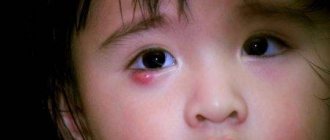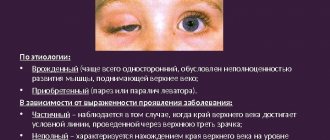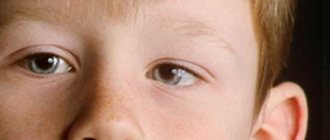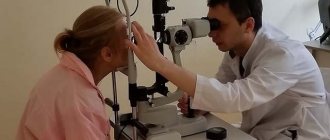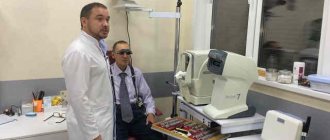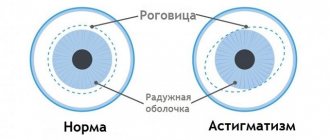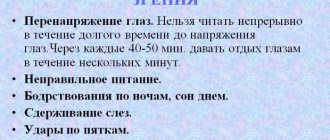Sometimes dense white dots and nodules appear on the face, which are not “squeezed out” and to a certain extent spoil the entire aesthetics. They can be more or less noticeable, solitary or located in a small group. In any case, if you have them, then this state of affairs probably does not suit you. In this article we will tell you why this problem may occur and what to do about it.
Causes
Millet can be primary or secondary, depending on the etiological factors.
Primary occurs on the skin of the eyelids in people with a hereditary predisposition. Secondary develops against the background of a disease or injury - accidental household or during cosmetic procedures.
Possible reasons for the appearance of millet:
- autoimmune diseases;
- metabolic disorders;
- incorrectly selected eyelid cosmetics;
- disorders of the gastrointestinal tract;
- endocrine system disorders;
- damage to the eyelids;
- seasonal hypovitaminosis;
- oily skin type;
- burns or excessive sun exposure.
The appearance of millet, whiteheads on the skin of the lower or upper eyelid depends on the functioning of the sebaceous glands. They are most affected by the endocrine system and the effects of cosmetics.
Reasons for appearance
It is quite difficult to determine exactly why milia appear on the eyelids. In most cases, it is not possible to establish the cause; doctors do not focus on this, since acne does not cause serious concern. It has been noticed that most often millet appears on the upper eyelid. It may remain untouched for years or spread across the face. The following factors can provoke milia:
- excessive fat production due to zinc deficiency;
- blockage of the sebaceous glands;
- clogging of skin pores with dirt and particles of sebaceous secretions;
- peeling of the skin, resulting in the accumulation of dead particles;
- use of low-quality cosmetics;
- poor nutrition.
Milia may indicate disturbances in the endocrine system or gastrointestinal tract.
Milia in the eyes can be a primary or secondary phenomenon. Very often, such formations are symptoms of protracted forms of endocrine diseases or disorders of the gastrointestinal tract. Milia under the eyes and all over the face occur at any age. Dermatologists often observe the genetic nature of the process. In addition, there is a gender predisposition, most often millet occurs in females.
Localization of white pimples on the eyes
Millet is most often located on the upper and lower eyelids, but can appear anywhere there is hair. It looks like a small cyst filled with epithelial cells and sebum. The source of formation is the excretory ducts of the sweat glands or hair follicles.
It appears as single or multiple nodular rashes on the eyelids of a white-yellow color. The elements of the rash are clearly demarcated from healthy skin, without an inflammatory halo. They feel dense to the touch; in the center there may be a black comedon - an accumulation of horny masses. They resemble a grain of millet in appearance, which influenced the name.
The nodules reach a size of 1-2 mm, often located symmetrically. Millet on the skin of the upper or lower eyelid does not cause pain, only aesthetic discomfort. Pronounced rashes are a cosmetic defect.
In the area of the inner edge along the lash line it can cause discomfort. Convex nodules come into contact with the mucous membrane when blinking or moving the eyeballs, causing the sensation of a foreign object in the eye, lacrimation, and burning.
On the lower eyelid, millet manifests itself as chaotic multiple rashes, tending to be located at the outer corner of the eye, spreading to the cheeks and cheekbones.
Milia do not appear on the mucous surface. If a white nodule or inflammation occurs on the inner surface of the eyelids, you should immediately contact an ophthalmologist for diagnosis and treatment.
Diagnosis of milia
To diagnose millet, you do not need to have special knowledge. Small subcutaneous grains of yellowish-white color immediately “catch” the eye. They can be localized on the eyelids, under the eyes, on the scalp and face. Sometimes they can be observed on the genitals. Whiteheads are absolutely safe for people and do not cause pain.
However, the appearance of milia on the eyelid can cause great discomfort. It is not at all necessary to visit a doctor to identify a diagnosis, but to prescribe treatment is simply necessary. Inept self-removal of grass can lead to wounds that will not heal for a long time. In some particularly sensitive areas, such as the eyelid, it is strictly forbidden to open the milia yourself.
Treatment of milia
Professional removal of eyelid marks is performed by a dermatologist or cosmetologist. The procedure is available in aesthetic medicine centers.
Treatment methods:
- electrocoagulation;
- laser removal;
- cryodestruction;
- mechanical extraction of millet grains.
Electrocoagulation is based on exposure to high temperatures. The nodules in the eyelid area are burned with an electrode. A crust forms and will fall off within a few weeks. Before the procedure, the surgical site is injected with an anesthetic. The formations are small, there are no scars left. The procedure is bloodless.
The laser can accurately control the depth of burning. The method is more gentle; you can remove millet in hard-to-reach places - corners, folds of the eyelids, where the skin is thin and delicate. The beam simultaneously cauterizes the vessels, eliminating bleeding. Before the procedure, local anesthesia is given. The success of treatment and the risk of scar formation depend on the qualifications and experience of the doctor.
Need advice from an experienced doctor?
Get a doctor's consultation online. Ask your question right now.
Ask a free question
Cryodestruction. Previously, they used the reed method: they wrapped cotton wool around a wooden stick, soaked it in liquid nitrogen, and applied it to the formation without the ability to control the depth of impact. This method caused a high risk of scar formation on the eyelid and was not used when localizing nodules near the lacrimal canal or the outer corner of the eyes. Nowadays they use applicators: the device delivers the refrigerant precisely to the pathological area. Several repetitions of freezing and thawing ensure the death of the millet cells. In place of the milia, a vesicle with serous contents appears. It soon subsides and a crust appears. Recovery lasts about two weeks, and the method can be used without anesthesia.
You can remove millet on the lower eyelid manually using a scalpel: the cyst is pierced and the contents are squeezed out with a special spoon. The method is accessible, but traumatic. Pressure on the skin around the milia leads to damage to healthy tissue and increased swelling. This method does not guarantee complete removal of content. If not everything is removed, an inflammatory process may begin, suppuration, complications are especially dangerous in the eye area. It is difficult to carry out manual manipulations near the upper fold of the skin due to the mobility of the tissues. Hardware methods are more suitable for removing a nodule.
In case of a massive rash, you will have to cleanse the skin again: you can remove no more than 10-15 rashes in one session.
If milia on the eyelid appears in a child in the first year of life, do not treat at home. Cysts may disappear with age, consult your doctor and monitor the condition of the nodules.
Treatment of the disease
Since the formation is not of an ophthalmological nature, a cosmetologist or dermatologist will help remove it.
Millet does not cause any health concerns, but often patients want to get rid of the manifestations due to visual defects. This is done absolutely safely immediately after appearance or after several years. The process is treated by a dermatologist or cosmetologist; the pathology is not related to ophthalmology, so you should not consult a doctor in this area.
It is best to remove milia on the eyelid in specialized clinics or beauty salons. Before the procedure, it is important to provide all the information: how long the millet has been bothering you, what caused it. The doctor diagnoses the situation and prescribes a procedure. There are homemade recipes that can be used to remove millet grass, but they should be used with caution.
Specialized treatment
Removing milia involves contact with the skin, so you should follow the conditions. The procedure must be sterile to avoid causing infection. There are no medications that can be used to treat millet. For removal, drastic methods are provided. The procedure is performed on an outpatient basis, after which the patient does not require rehabilitation. The following methods are considered popular:
- Mechanical method. First, the area with millet is steamed. Then the tubercles are pierced with a needle and squeezed out using a special spoon. The simplest and cheapest way, but traumatic. After the procedure, red marks and slightly painful sensations remain.
- Electrocoagulation. This technique is widely used in beauty salons. Using low-frequency electric current, the millet is affected. The tubercles may not completely disappear in one procedure, so a complex is immediately prescribed until complete removal.
- Laser coagulation. The most expensive method of removal, but painless. The millet is removed with a laser beam, leaving no traces.
How to get rid of it at home?
You can remove the manifestation at home, but you should remember about the possibility of infection and the painfulness of the procedure.
Doctors do not recommend removing milioma yourself; this can lead to infection. In addition, it is worth understanding that this procedure will be painful. But if finances do not allow you to use the services of a cosmetologist, you can do it yourself. It is important to understand that each tubercle will have to be removed separately, so for large formations it is better not to use this method.
If a couple of milia are diagnosed on the eyelids, the size of which does not exceed the norm, you can remove them at home using a sterile needle. It is best to take a new one from the kit with a syringe. Before the procedure, you need to thoroughly wash your hands and disinfect them with alcohol. Then the skin is prepared: first, the face must be cleaned of dirt and remaining fat. Then treat the affected area with Chlorhexidine. After this, use a needle to make a pinhole puncture in the center and squeeze until blood appears. Then treat the area again with an antiseptic solution.
How to get rid of whiteheads at home
You can get rid of corn on the eyelid at home using different methods:
- chemical peeling;
- ointments;
- masks;
- extrusion
Chemical peeling is done using acids: AHA, malic, trichloroacetic, salicylic. It is recommended to consult a doctor before treating a rash that has appeared on the eyelid.
A more gentle method is keratolytic agents that accelerate the exfoliation of epidermal cells: ointments with salicylic, lactic acid, urea-based preparations. Apply to cleansed skin and leave for several hours. Before this, treat the healthy skin of the eyelids around the grass with a protective ointment, zinc is suitable. Keratolytics thin the covering of the lesion, making it easier to remove.
Squeezing is done after using keratolytics and steaming the eyelid. First, the skin is treated with an antiseptic, then the millet is carefully pierced with a sterile needle. Squeeze out the contents with smooth movements. If salicylic ointment has been applied several times in a row, it can be removed without a needle - thinned skin breaks through easily.
To soften and self-cleanse the skin of the eyelids from milia, you can use masks based on bodyaga and peroxide. To prepare 50 g of dry bodyaga, mix with peroxide to obtain a thick paste. Apply directly to the grass, rinse off after 10 minutes.
The product may cause an allergic reaction. If symptoms appear, you should immediately wash off the mask.
